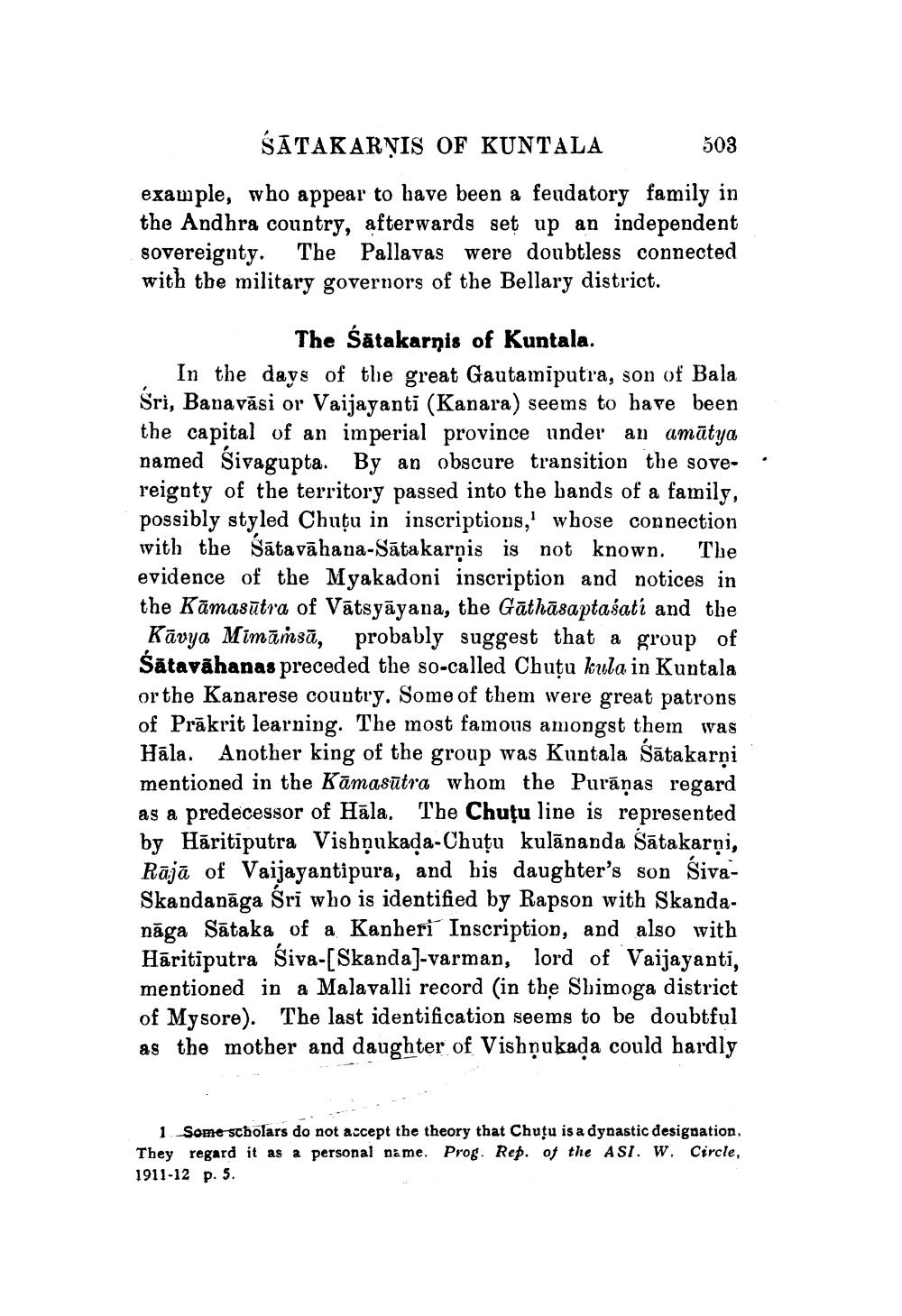________________
ŚĀTAKARNIS OF KUNTALA 503 example, who appear to have been a feudatory family in the Andhra country, afterwards set up an independent sovereignty. The Pallavas were doubtless connected with the military governors of the Bellary district.
.
The Śätakarnis of Kuntala. In the days of the great Gautamiputra, son of Bala Sri, Banavāsi or Vaijayanti (Kanara) seems to have been the capital of an imperial province under an amatya named Sivagupta. By an obscure transition the sove reignty of the territory passed into the bands of a family, possibly styled Chutu in inscriptions, whose connection with the Sātavāhana-Sātakarộis is not known. The evidence of the Myakadoni inscription and notices in the Kāmasūtra of Vātsyāyana, the Gāthāsaptaśati and the
Kāvya Mimāṁsā, probably suggest that a group of Śātavāhanas preceded the so-called Chutu kula in Kuntala or the Kanarese country. Some of them were great patrons of Prākrit learning. The most famous amongst them was Hāla. Another king of the group was Kuntala śātakarņi mentioned in the Kāmasūtra whom the Purāṇas regard as a predecessor of Hāla. The Chuțu line is represented by Hāritiputra Vishṇukada-Chutu kulānanda Sātakarni, Rājā of Vaijayantipura, and his daughter's son SivaSkandanāga Śri who is identified by Rapson with Skandanāga Sataka of a Kanberi Inscription, and also with Hāritiputra Siva-[Skanda]-varman, lord of Vaijayanti, mentioned in a Malavalli record (in the Shimoga district of Mysore). The last identification seems to be doubtful as the mother and daughter of Vishṇukada could hardly
1. Some scholars do not accept the theory that Chutu is a dynastic designation, They regard it as a personal name. Prog. Rep. of the ASI. W. Circle, 1911-12 p.5.




